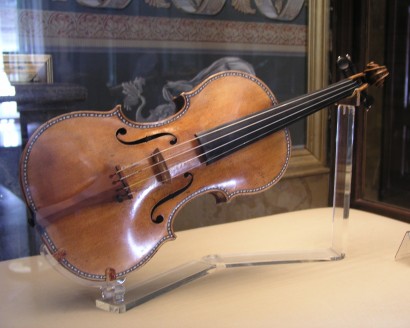+25 °C, +15 °C ... +26 °C Tomorrow:+28 °C

Their more powerful and fuller sound has seen them acknowledged as the best violins ever crafted. But those created by Antonio Stradivari would only go on to become the world’s most expensive musical instruments as a result of errors in their creation, it is claimed. An analysis of hundreds of instruments made in his legendary workshop has identified the key design features that give them more power and a fuller sound. Acoustic experts found that vital to the sound is the shape and length of the violin’s f-shaped holes through which air escapes. The more elongated these are, the more noise the instrument can produce. The thickness of a violin’s back plate also contributes to its acoustic power. But a model created from the measurements of technical drawings of Cremonese-era violins from museums, collector databases and books, as well as X-ray and CAT scans of the instruments, suggests the alterations to the traditional holes were unintentional – they most likely came about by craftsmanship error as they tried to replicate an original blueprint. The researchers found the 17th and 18th century ‘golden age’ violins crafted by Stradivari and the other Cremonese masters Giuseppe Guarneri Del Gesu and Andrea Amati slowly evolved to more elongated f-holes and thicker back plates, rather than an obvious shift in design. Professor Nicholas Makris, of the Massachusetts Institute of Technology, in Boston, said: ‘We found if you try to replicate a sound hole exactly from the last one you made, you will always have a little error. ‘You are cutting with a knife into thin wood and you cannot get it perfectly, and the error we report is about 2 per cent … always within what would have happened if it was an evolutionary change, accidentally from random fluctuations.’ In 2011 a Stradivarius sold at auction for almost £10million. While each violin maker undoubtedly possessed a good ear, whether they recognised the particular design elements that contribute to a more powerful sound is still up for debate. Professor Makris said: ‘People had to be listening, and had to be picking things that were more efficient, and were making good selection of what instrument to replicate. ‘Whether they understood, ‘Oh, we need to make the sound hole more slender,’ we cannot say. But they definitely knew what was a better instrument to replicate.’ The study published in the Proceedings of the Royal Society took seven years and involved examining the acoustic dynamics of stringed instruments from the oud, lute, and medieval fiddles to the guitar and ultimately the violin, a period spanning 800 years. During this time sound-hole shape evolved from a simple round shape to a semicircle, which eventually morphed into a c-shape that grew more elongated, ultimately assuming the f-shape of the violin. The perimeter of these shapes steadily grew, while the area of the interior void gradually decreased. The results may be useful for master violin makers looking to design more powerful, fuller-sounding instruments, although Professor Makris acknowledges there is more to producing a quality violin than adjusting a few parameters. He added: ‘Mystery is good, and there is magic in violin making. Some makers, I do not know how they do it, it is an art form. They have their techniques and methods. But here, for us, it is good to understand scientifically as much as you can.' |
MAMUL.am - News from Armenia, Artsakh (Nagorno-Karabakh) and the world
Republication or redistribution of MAMUL.am content is expressly prohibited without the prior written consent.
Address: 1 Charents str., Yerevan, Republic of Armenia.
Tel.: +374 (10) 55-20-59
E-mail: info@mamul.am
Tel.: +374 (91) 99-22-02
E-mail: marketing@mamul.am



























